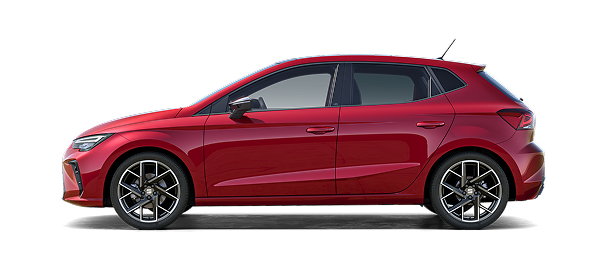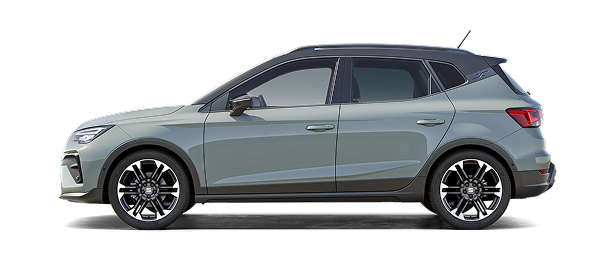Two thirds of young children do not travel correctly or safely when transported by car, according to the British organisation Child Seat Safety. It is not just a question of them not using a mandatory child seat, but other mistakes that can have serios consequences in the event of an accident. For example, this study points out that in most cases an inadequate restraint system is used or that children are not restrained correctly. According to Spain’s Traffic Department, the difference between correct and incorrect use can reduce the risk of casualty by 75% and injuries by 90%. All you have to do is follow some basic rules:
1. Use a certified child seat according to height and weight
Age alone does not determine what type of seat to use, but rather the child’s weight and height. According to Javier Luzón, who is responsible for the department of Vehicle Safety Development at SEAT, “it’s crucial to use a child seat from the adequate group category, as the design of each one meets the specific requirements to protect children’s bodies.”
SEAT has child seats of different groups that are certified according to the European regulation known as i-size. Think carefully about using hand-me-down seats, as the materials can deteriorate after a long period and they may not provide adequate protection. Following an accident, remember also to replace all child seats.
2. Always in the rear seats
“This is by far the safest place to travel and is therefore where children should be transported” explains Javier. Although the front passenger seat is equipped with a child restraint system, it is only advisable to use it exceptional occasions, for example when the rear seats are already occupied by other children. In this case, the airbag must be deactivated.
3. Fasten the child seat correctly
It is important to carefully read the installation instructions for the child seat and check that it correctly attached before each trip. The easiest and most convenient method is the Isofix. If the seat requires installation with the seatbelt, “make sure the belt goes correctly through the loops indicated by the manufacturer” says Javier.
4. Tighten the straps on the harness
The straps are often loose enough for children to free their arms, which could lead to serious consequences in the event of a collision. The harness straps should be tightened and close fitting to the body. You can test this by trying to pinch the strap; if you can, then tighten it a little more.
5. Facing the rear for as long as possible
Two out of every three younsters travel incorrectly in cars.
“In the event of a frontal impact, a baby’s neck cannot support the weight of its head when propelled forward” explains Javier. For this reason, Group 0 and 0+ seats are designed exclusively to face the rear. It is mandatory to keep the seat rear facing at least until the child reaches the age of 15 months, and can remain in this position with children up to 105 cm in height as prescribed by regulation ECE R129.
6. Make no exceptions during short trips
Commutes from home to school account for the highest incidence of risky behaviour. According to the Royal Automobile Club of Spain 37% of drivers admit to transporting children without a child seat on some occasions. Others allow older children to fasten themselves in without checking to make sure they have done it correctly.
7. No outerwear or backpacks
For trips lasting only a few minutes, many children are placed in their seats while still wearing a coat or even a backpack, which prevents the belt from remaining snug against the child’s body and can impede the correct operation of the safety harness. Even though the trip is a short distance.
“You should never forget that safety is a priority from the moment you set out”.
8. Place all equipment in the boot
Luggage and objects left on the seats or rear tray can become projectiles in the case of sudden braking or a collision.
9. Lead by example
Consistency between what is said and what is done is as essential in teaching as it is in road safety. Seatbelts must be worn by everyone and children will imitate the behaviour of their parents because actions speak louder than words.
10. In the event of an accident
Whenever possible, children must be removed from the car in their seat. Do not carry them out in your arms unless there is an immediate risk of danger as this could cause a serious injury.
Legislation
The rules governing child restraint systems (CRS) are quite similar all over Europe, but with slight variations in each country.
SPAIN: MANDATORY CRS FOR CHILDREN UNDER 135 CM. ADVISABLE UP TO 150 CM ALWAYS IN THE REAR UNLESS THE VEHICLE HAS NO REAR SEATS OR ARE OCCUPIED BY OTHER CHILDREN
FRANCE: MANDATORY CRS FOR CHILDREN UNDER 10
ALWAYS IN THE REAR UNLESS THE VEHICLE HAS NO REAR SEATS OR ARE OCCUPIED BY OTHER CHILDREN
ITALY: MANDATORY CRS FOR CHILDREN UNDER 12 YEARS AND 150 CM IN HEIGHT ADVISABLE UP TO 150 CM
UNITED KINGDOM: MANDATORY CRS FOR CHILDREN UNDER 12 AND 135 CM
GERMANY: CRS FOR CHILDREN UNDER 12 AND 150 CM IN HEIGHT
ADVISABLE FOR CHILDREN UP TO 14; USE REAR SEATS
AUSTRIA: MANDATORY CRS FOR CHILDREN UNDER 14 AND 150 CM













